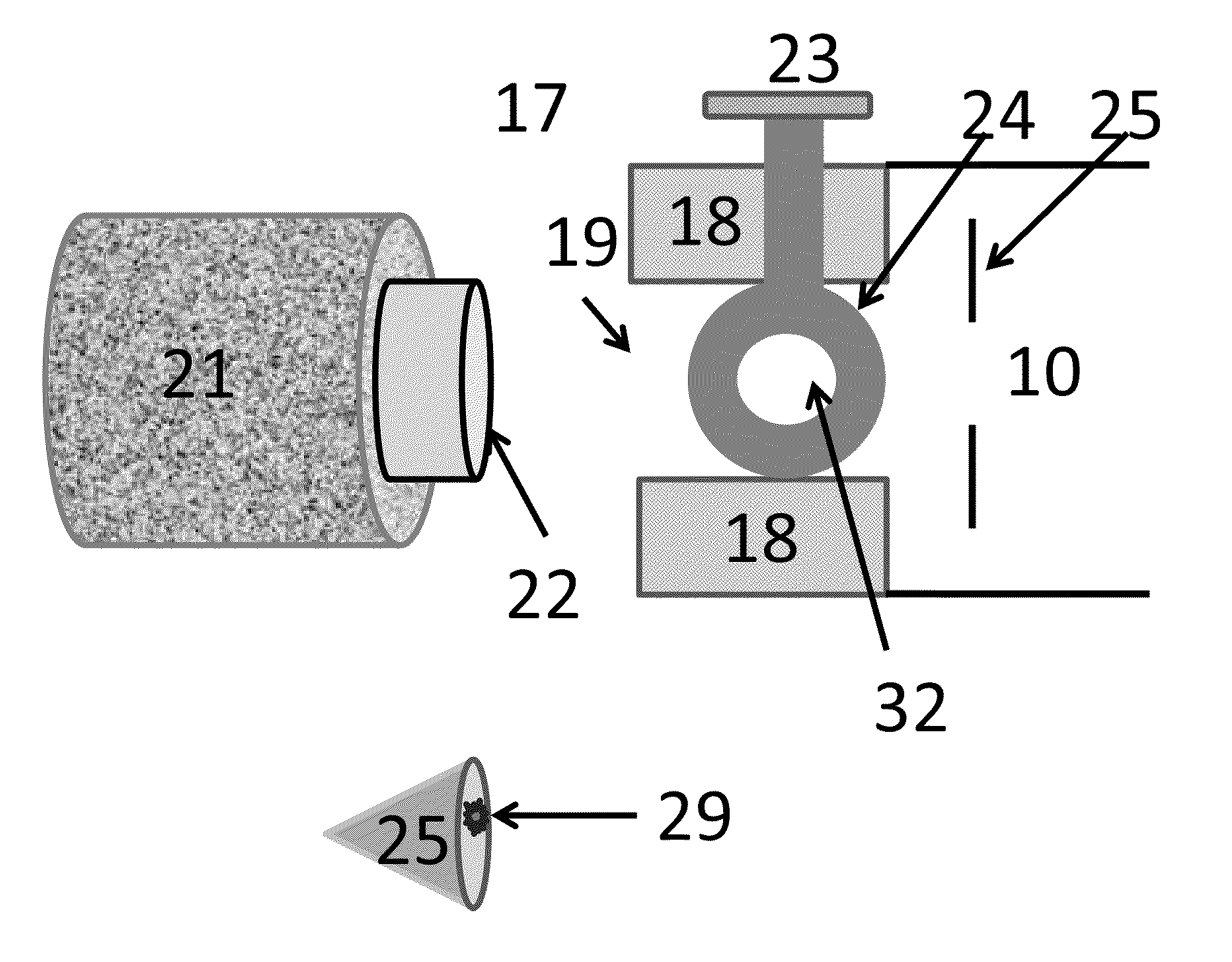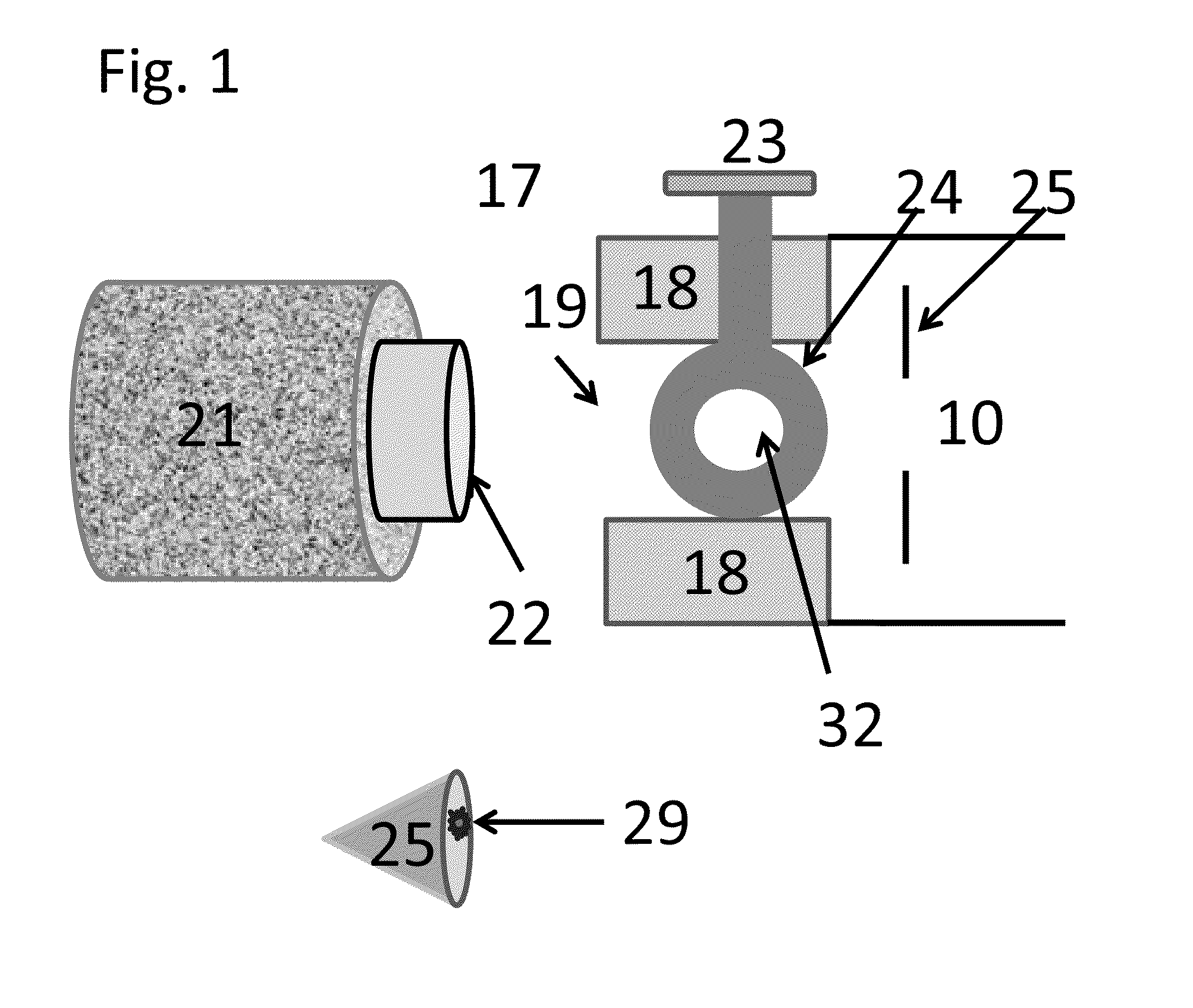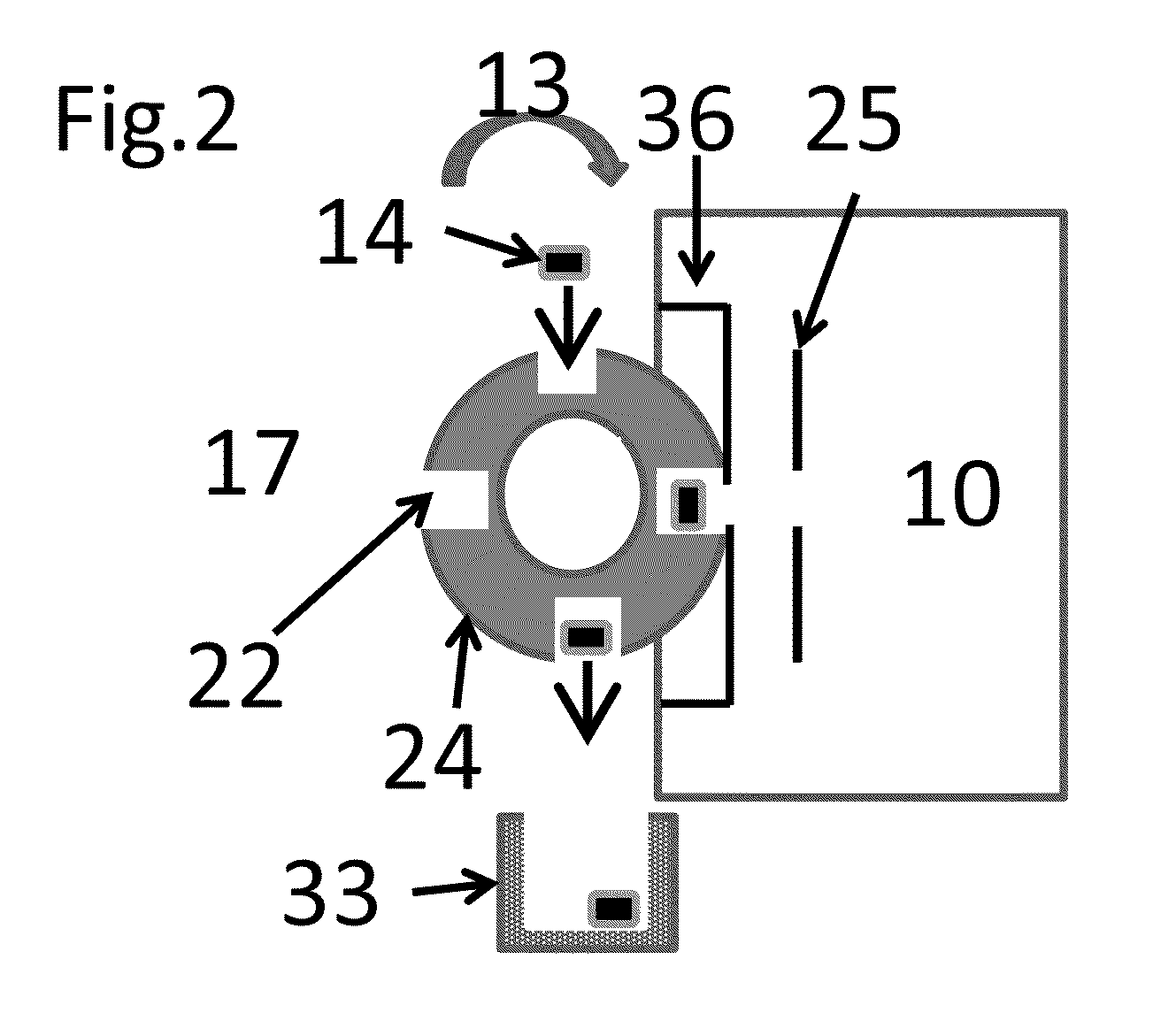System and Methods for Ionizing Compounds using Matrix-assistance for Mass Spectometry and Ion Mobility Spectometry
a technology of mass spectometry and ion mobility, applied in the field of mass spectrometry and ion mobility spectrometry, can solve the problems of not readily applicable to extracting quantitative data, requires a high laser and extraction voltage, and is not readily applicable to quantitative data extraction, etc., to achieve the effect of facilitating ionization, low cost and safety of maiv
- Summary
- Abstract
- Description
- Claims
- Application Information
AI Technical Summary
Benefits of technology
Problems solved by technology
Method used
Image
Examples
Embodiment Construction
[0088]In the invention described here, ionization occurs in the sub-atmospheric pressure that can be associated with the ionization region of commercial mass spectrometers such as the commercial or modified inlets (inlet tubes, skimmers, etc.) of an atmospheric pressure ionization source or a vacuum ionization source of a mass spectrometer or ion mobility spectrometer facilitated by an appropriate small molecule matrix such as, but not limited to 3-nitrobenzonitrile (3-NBN), 2-nitrobenzonitrile (2-NBN), 5-methyl-2-nitrobenzonitrile, coumarin, methyl-2-methyl-3-nitrobenzoate, methyl-5-nitro-2-furoate, bronopol (2-bromo-2-nitropropane-1,3-diol), 3-nitrobenzaldehyde, 6-nitro-o-anisonitrile, and phthalic anhydride and certain derivatives thereof. More compounds such as 2,5-DHAP act as MAIV matrices when the sample or the sample substrate are heated. Other means of creating sub-atmospheric pressure to the sample can be used with this method such as a pin-hole leak. Providing means for en...
PUM
 Login to View More
Login to View More Abstract
Description
Claims
Application Information
 Login to View More
Login to View More - R&D
- Intellectual Property
- Life Sciences
- Materials
- Tech Scout
- Unparalleled Data Quality
- Higher Quality Content
- 60% Fewer Hallucinations
Browse by: Latest US Patents, China's latest patents, Technical Efficacy Thesaurus, Application Domain, Technology Topic, Popular Technical Reports.
© 2025 PatSnap. All rights reserved.Legal|Privacy policy|Modern Slavery Act Transparency Statement|Sitemap|About US| Contact US: help@patsnap.com



